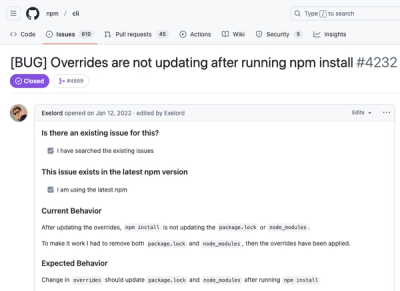trailpack-proxy-passport








The Proxy Passport is built to be used on Trailsjs with Proxy Engine.
Dependencies
Supported ORMs
Supported Webserver
Intallation
With yo :
npm install -g yo generator-trails
yo trails:trailpack trailpack-proxy-passport
With npm (you will have to create config file manually):
npm install --save trailpack-proxy-passport
Configuration
First you need to add this trailpack to your main configuration :
module.exports = {
...
packs: [
...
require('trailpack-proxy-passport'),
...
]
...
}
You need to add passportInit and optionally passportSession :
middlewares: {
order: [
'addMethods',
'cookieParser',
'session',
'passportInit',
'passportSession',
'bodyParser',
'methodOverride',
'router',
'www',
'404',
'500'
]
}
And to configure passport:
'use strict'
const JwtStrategy = require('passport-jwt').Strategy
const ExtractJwt = require('passport-jwt').ExtractJwt
const EXPIRES_IN_SECONDS = 60 * 60 * 24
const SECRET = process.env.tokenSecret || 'mysupersecuretoken';
const ALGORITHM = 'HS256'
const ISSUER = 'localhost'
const AUDIENCE = 'localhost'
module.exports = {
redirect: {
login: '/',
logout: '/'
},
bcrypt: require('bcryptjs'),
onUserLogin: (req, app, user) => {
return Promise.resolve(user)
},
onUserLogout: (req, app, user) => {
return Promise.resolve(user)
},
mergeThirdPartyProfile: (user, profile) => {
const mergedProfile = {
email: user.email,
gender: profile.gender
}
return Promise.resolve(mergedProfile)
},
strategies: {
jwt: {
strategy: JwtStrategy,
tokenOptions: {
expiresInSeconds: EXPIRES_IN_SECONDS,
secret: SECRET,
algorithm: ALGORITHM,
issuer: ISSUER,
audience: AUDIENCE
},
options: {
secretOrKey: SECRET,
issuer: ISSUER,
audience: AUDIENCE,
jwtFromRequest: ExtractJwt.fromAuthHeader()
}
},
local: {
strategy: require('passport-local').Strategy,
options: {
usernameField: 'username'
}
}
}
}
Then make sure to include the new file in config/index.js
//config/index.js
...
exports.passport = require('./passport')
WARNING : be sure you configure sessions correctly if your strategies need them
Further documentation on passport-jwt config can be found at themikenicholson/passport-jwt
Usage
Policies
Now you can apply some policies to control sessions under config/policies.js
ViewController: {
helloWorld: [ 'Passport.sessionAuth' ]
}
or
ViewController: {
helloWorld: [ 'Passport.jwt' ]
}
Routes prefix
By default auth routes doesn't have prefix, but if you use trailpack-footprints it automatically use footprints prefix to match your API. You can change this prefix by setting config.proxyPassport.prefix.
Log/Register users with third party providers
You can register or log users with third party strategies by redirect the user to :
http://localhost:3000/auth/{provider}
example github
http://localhost:3000/auth/github
Log/Register users with credentials
For adding a new user you can make a POST to auth/local/register with at least this fields : username (or email) and password.
For local authentication you have to POST credentials to /auth/local in order to log the user.
Disconnect
If you want to disconnect a user from a provider you can call :
http://localhost:3000/auth/{provider}/disconnect
example if a user don't want to connect with github anymore
http://localhost:3000/auth/github/disconnect
Logout
Just make a GET to auth/logout
License
MIT











